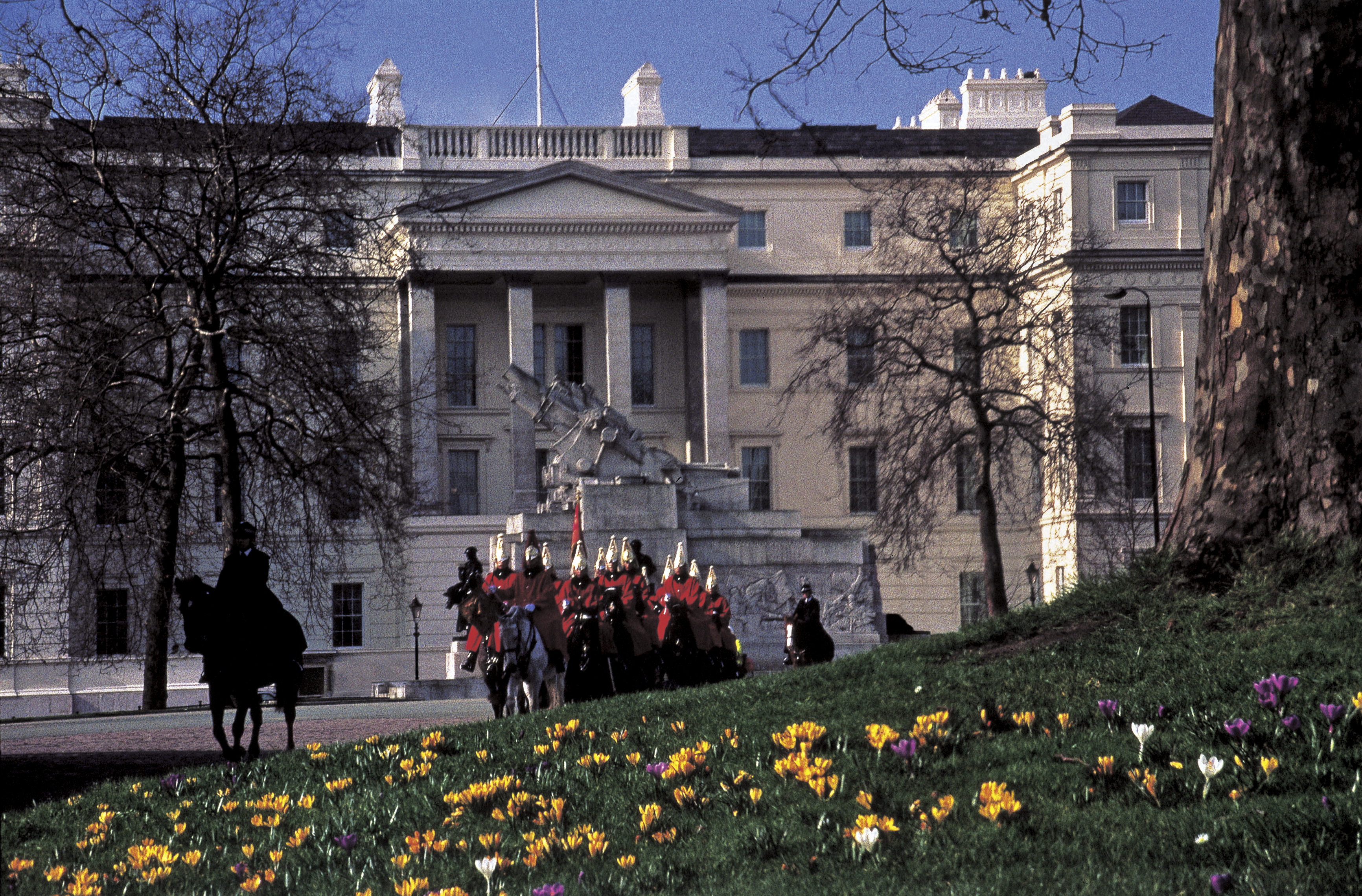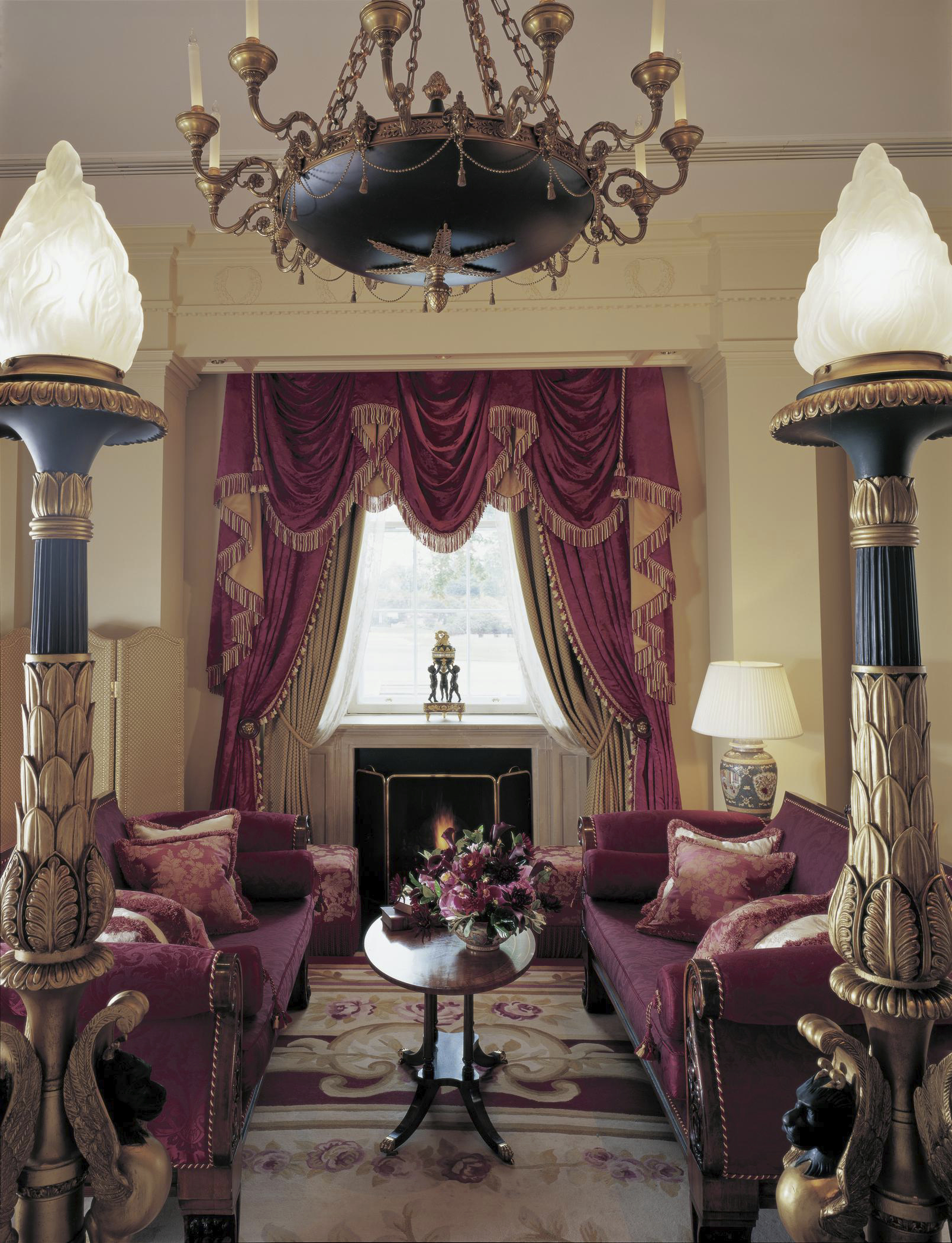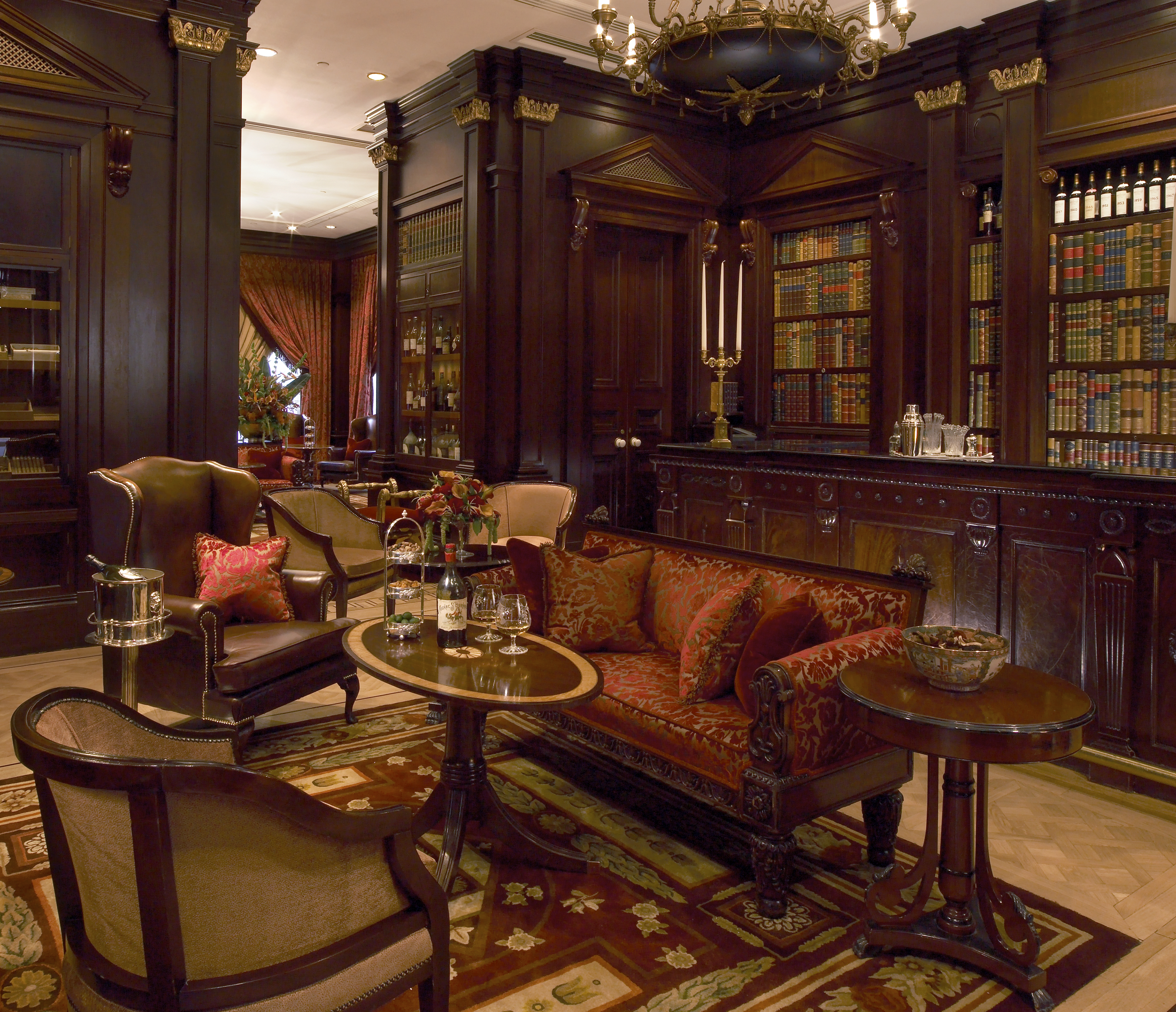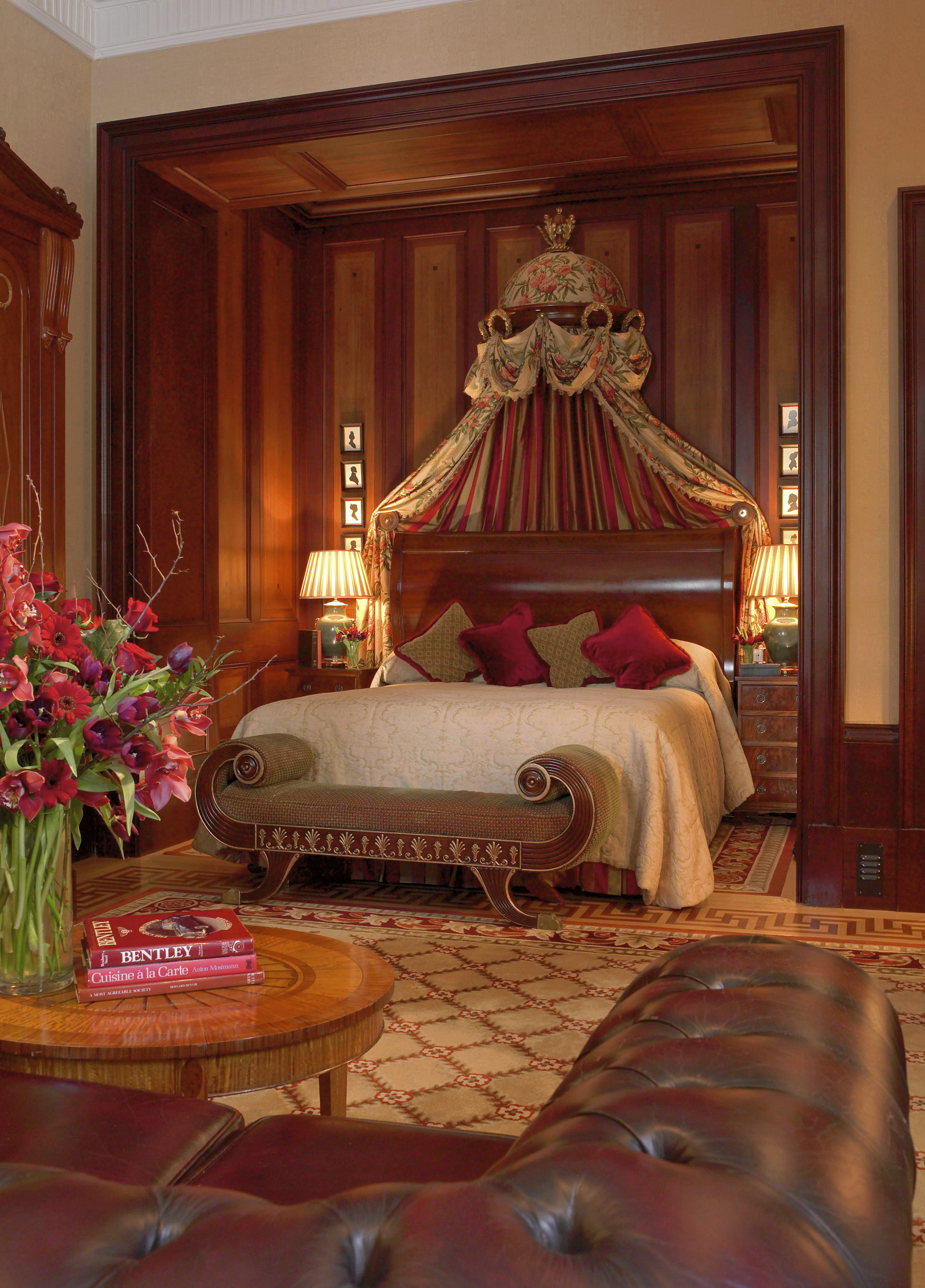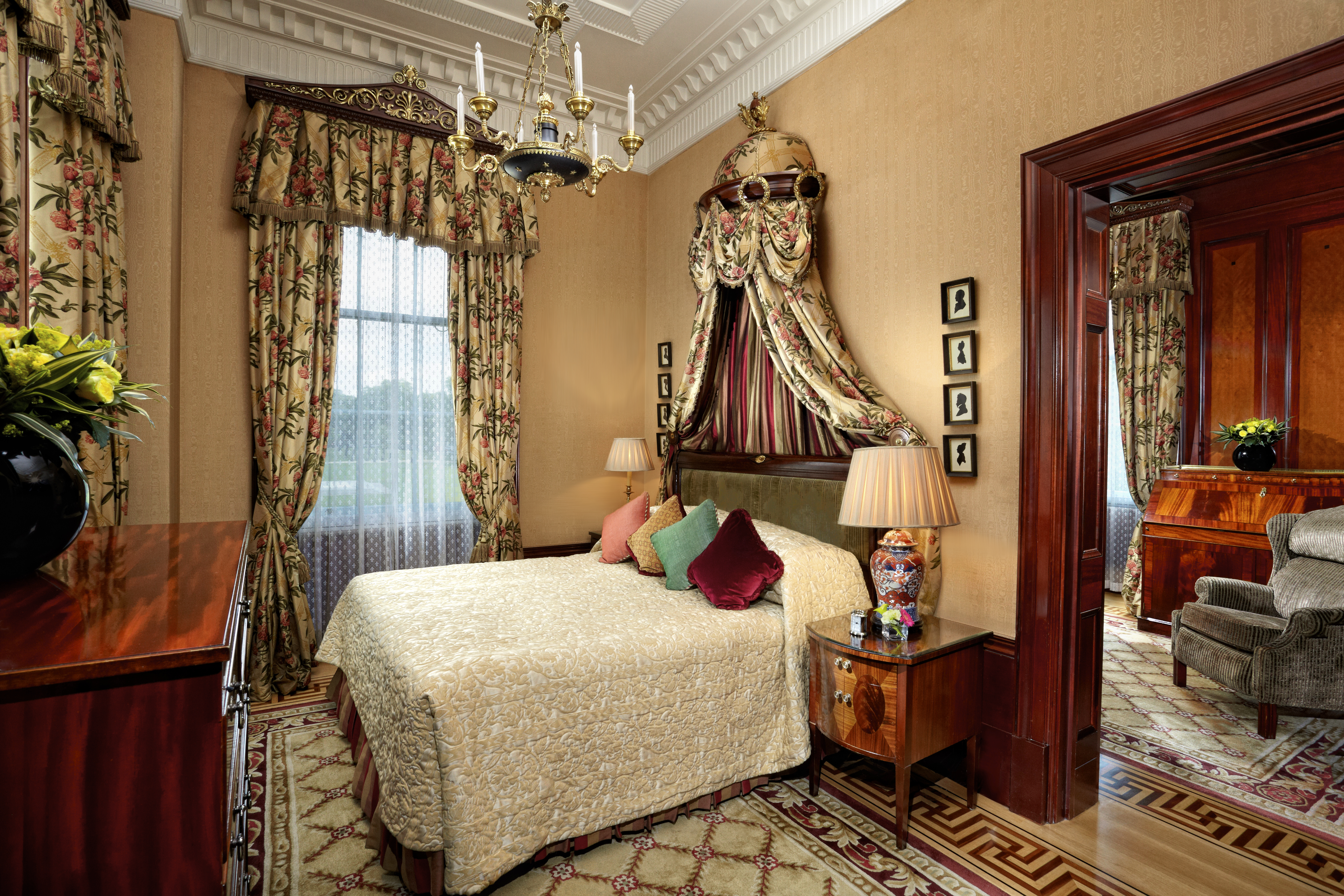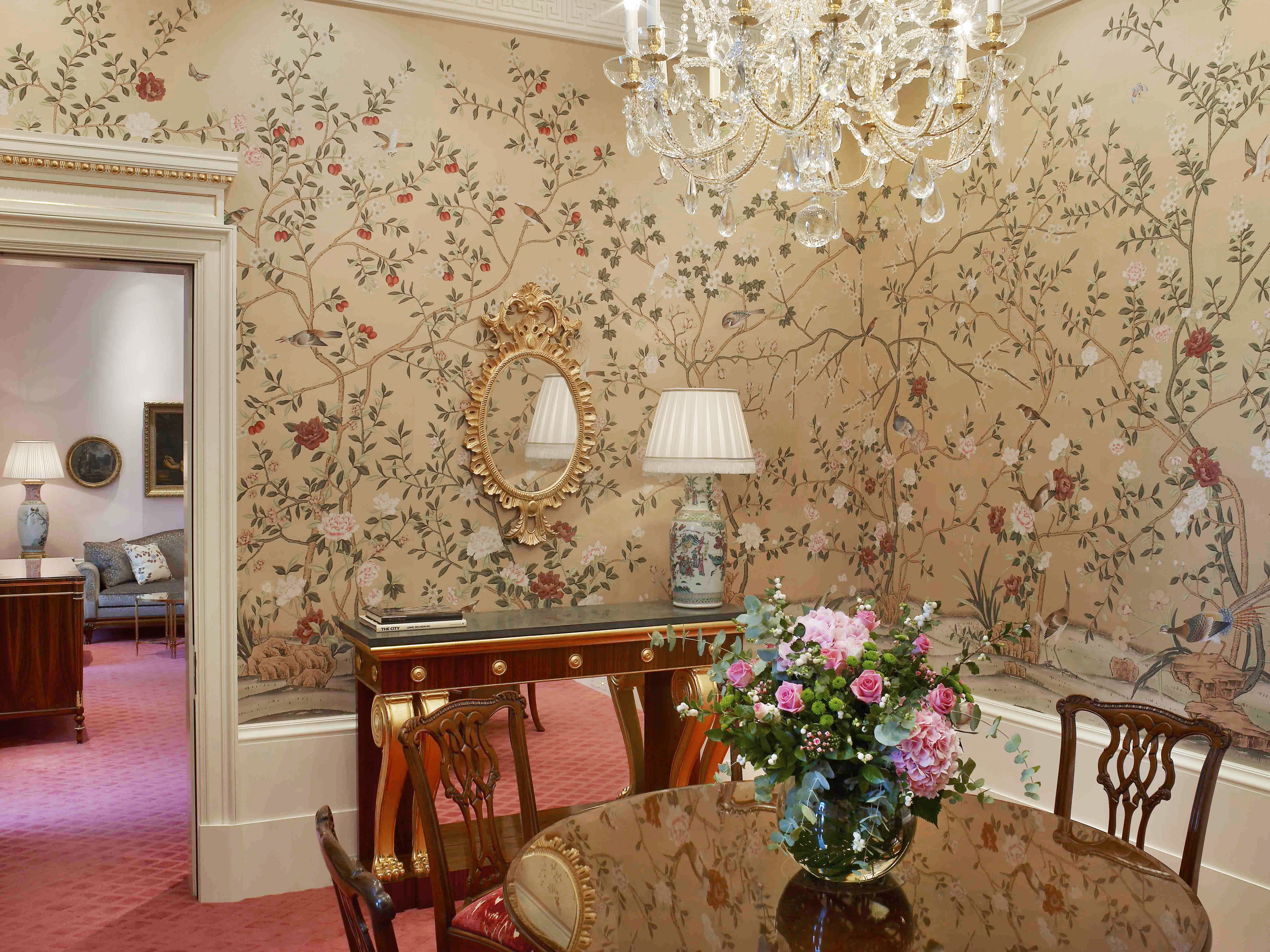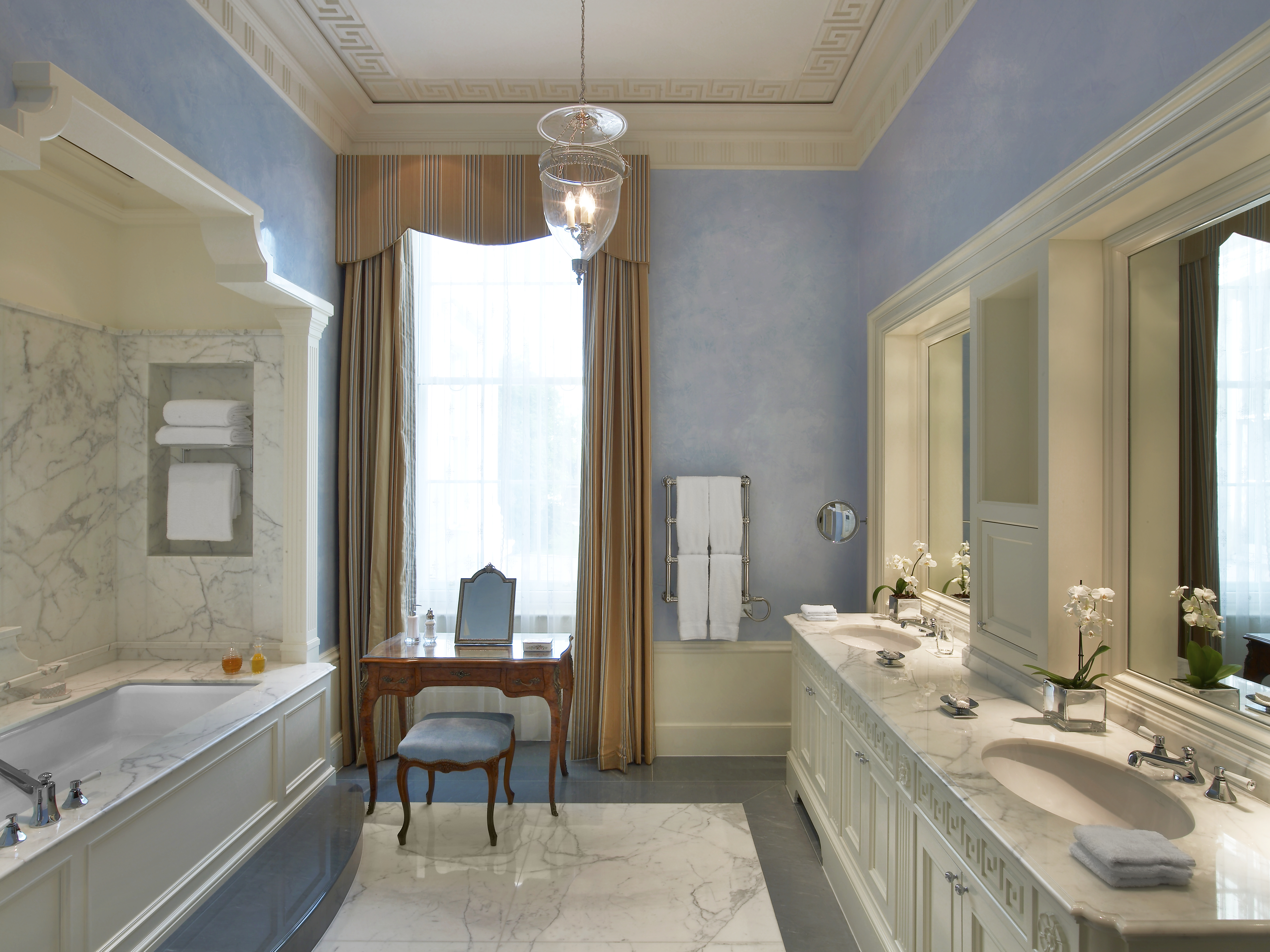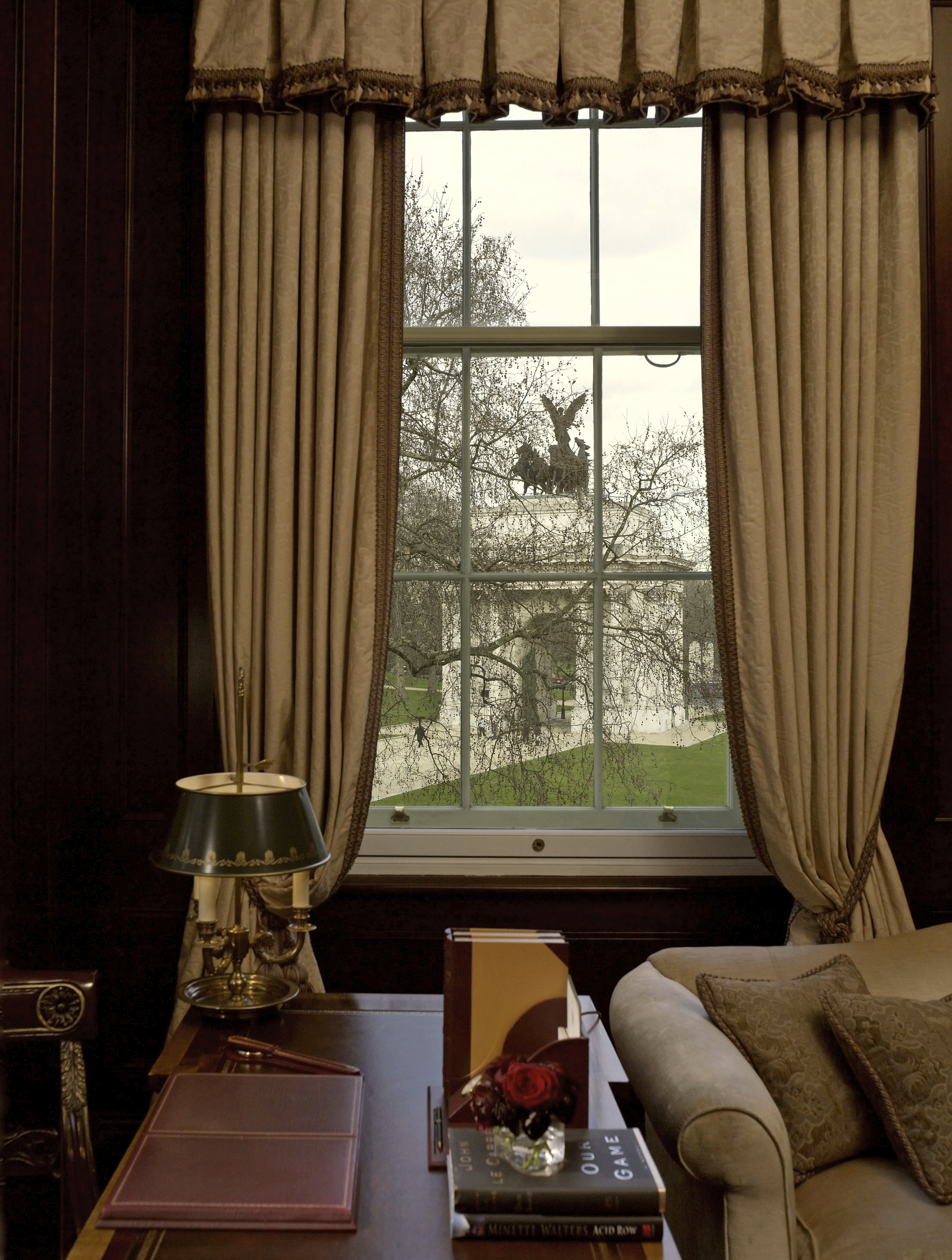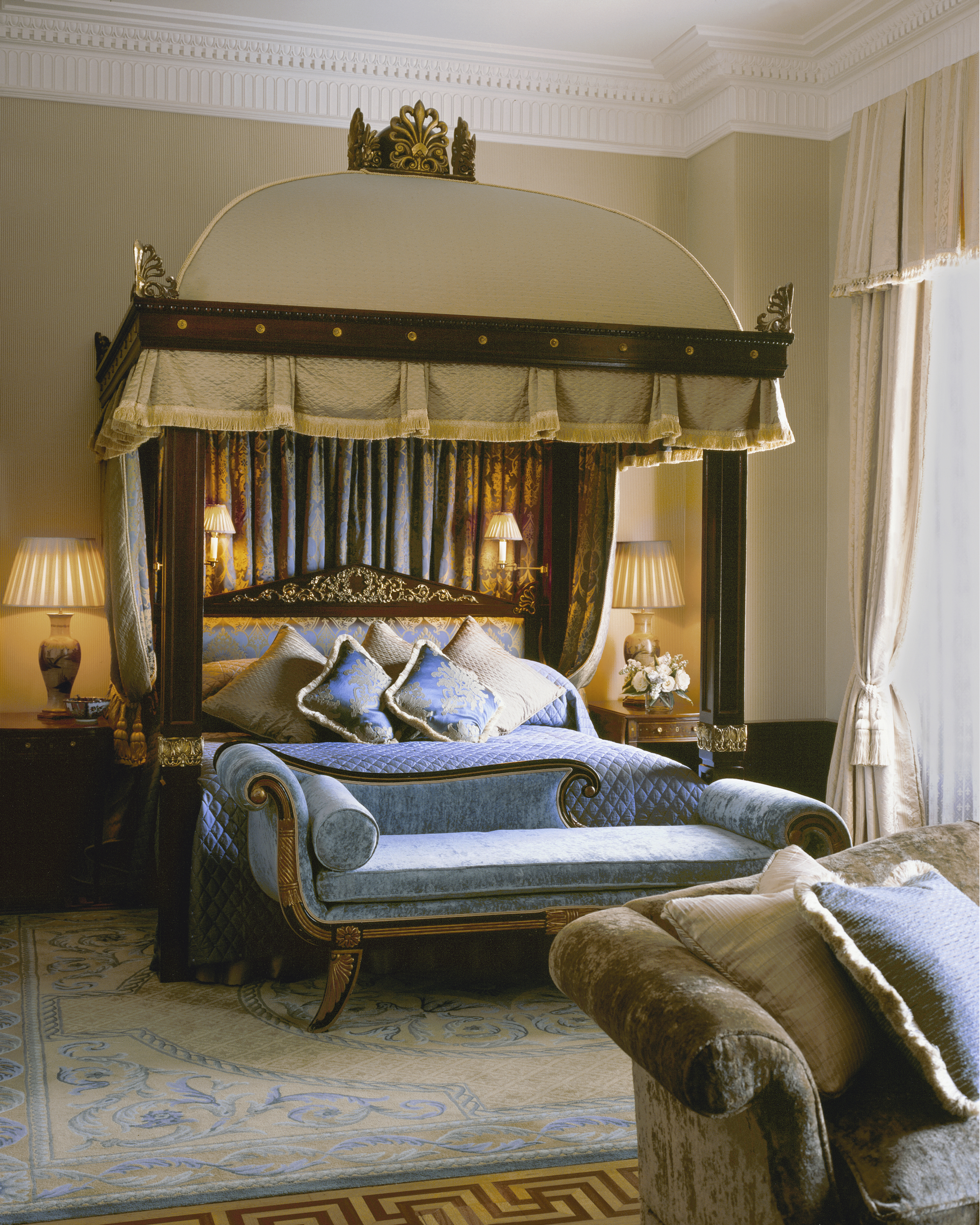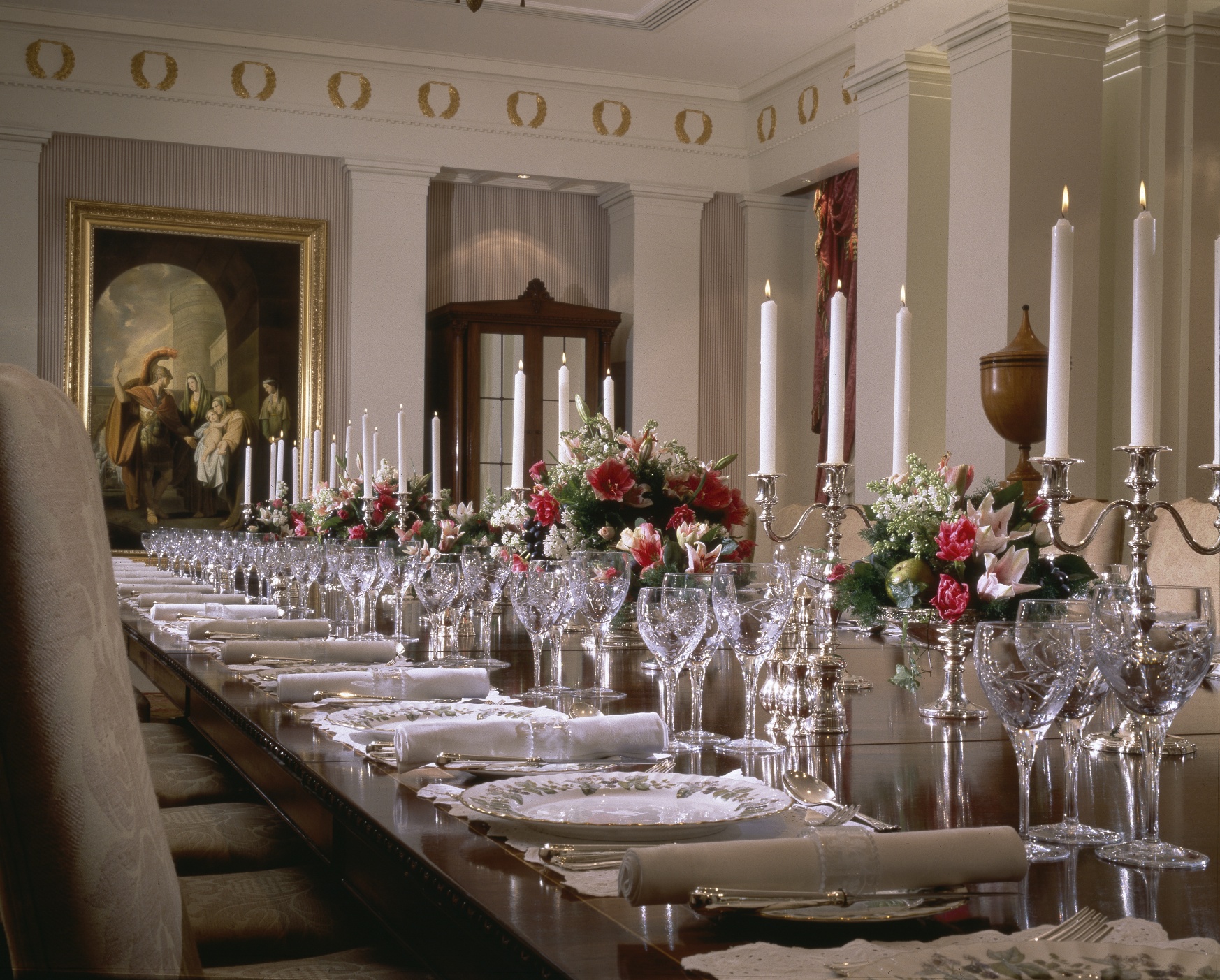The Lanesborough is recognised as one of the finest hotels in the world. However, it began life in 1719 as the red-brick residence of the 2nd Viscount Lanesborough. The house’s location in fields adjoining Hyde Park led the Viscount to carve the declaration that ‘It is my delight to be both in the town and the country’ above the door. However, the house was left empty after his death since he left no heirs.
During the reign of George II, the Physicians and Surgeons of the Westminster Infirmary in petty France formed a society to found a charity hospital and leased the house for this purpose at a nominal rent of £60 a year. The institution flourished, becoming a renowned hospital in which famous figures such as Florence Nightingale and John Hunter pioneered medical treatment.
In 1827 the Board of Governors commissioned architect William Wilkins to design a new and larger hospital. For the façade Wilkins would use a severe form of neo-Classicism never seen before, inspired by the Choragic Monument of Thrassylus in ancient Greece. With its raised porticoes, Wilkins was hoping to complement Apsley House, the home on the other side of Hyde Park Corner occupied by the 1st Duke of Wellington, hero of the Napoleonic Wars.
In 1980, St George’s Hospital closed its doors for the last time, and the magnificent building quickly became derelict. After several years of ‘intense planning, debate and speculation’, permission to convert the building into a hotel was finally obtained.
The development itself was in the hands of a group of wealthy investors, who spared no expense in assembling the finest team of architects, design consultants and hotel management experts to realise their dream of a new grand hotel worthy of its historic prime location, able to hold its own against the assured establishments of nearby Mayfair. The detailed planning began.
What they conceived was a hotel in the style and manner of a grand 19th century town house, a private residence, but infused with all the amenities and innovative spirit the late twentieth century had to offer. In this way, it would truly hark back to the progressive, inventive character of Regency Britain. It was also imperative that the Lanesborough distinguished itself from other luxury London hotels by crafting its own unique identity.
Part of that identity would be the extension of seamless, unobtrusive service. The entire hotel would be conceived around the butler system. The hunt for stellar talent to staff the hotel was a priority. Those who chose, or were chosen, to come on board knew they were going to be part of something special. Michael Peden, now Assistant Head Concierge, arrived six weeks before the opening excitement of being part of a new hotel was overwhelming. ‘I loved it!’ he says, ‘We created a new benchmark, everything had to be the best.’
Twenty years after the doors opened for the first time, in its own remarkable way, The Lanesborough changed worldwide perceptions and defined new expectations of the meaning of luxury hospitality. This superior Knightsbridge hotel has shown the way in creating a residence for guests who have always been used to the very best. This is their home.
Joelle’s Picks:
The Lanesborough, a St. Regis Hotel, London, England

